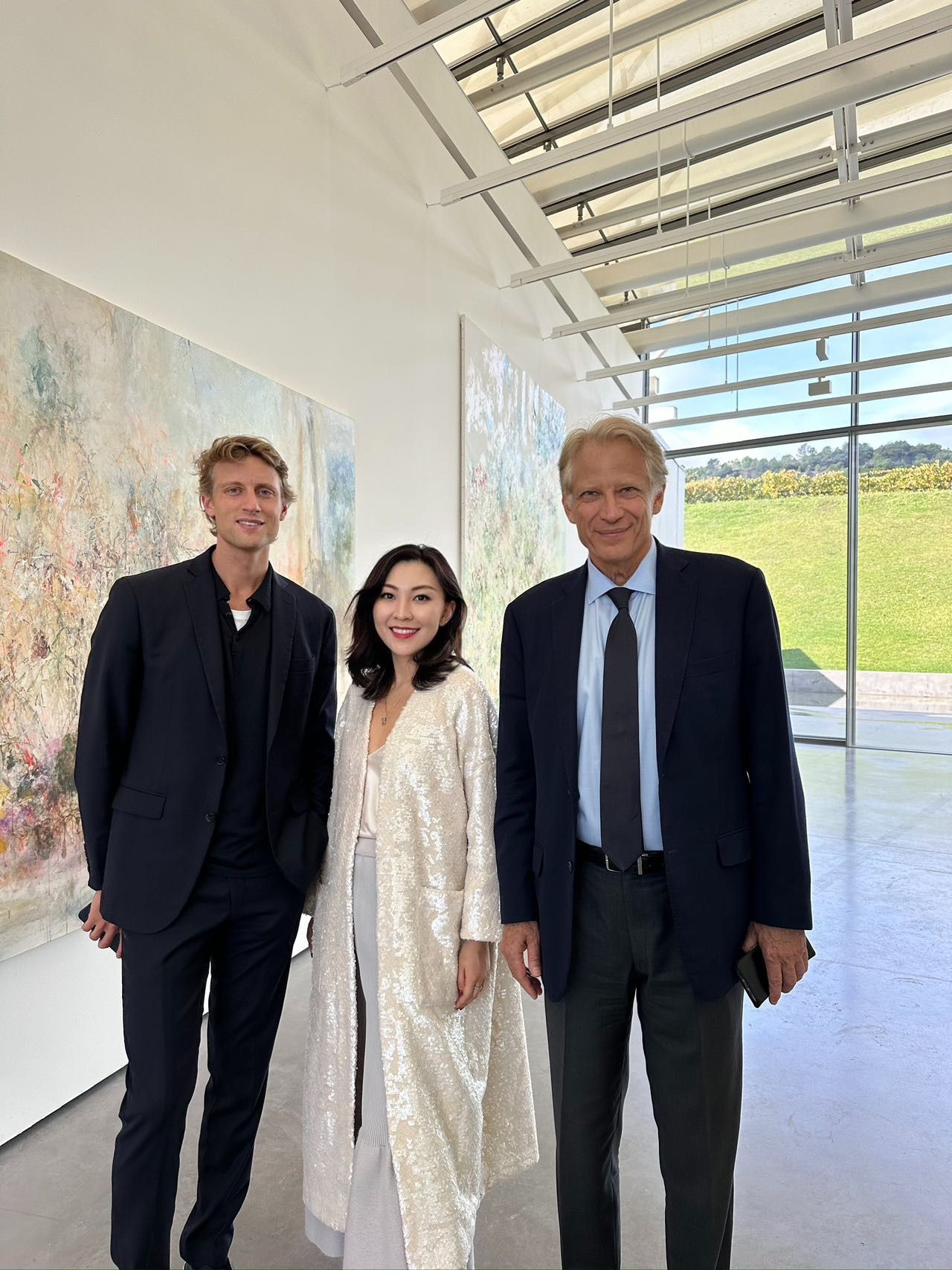
On a golden autumn afternoon in southern France, Korean artist Myonghi Kang’s solo exhibition took centre stage at Château La Coste, housed in a luminous, open gallery designed by Renzo Piano. Kang’s abstract landscapes, with their intricate play of light, shadow, and colour, are not mere depictions of nature but rather meditations on the spirit of time and its transcendence.
For Dominique de Villepin, former French Prime Minister and a fervent supporter of Kang, it is the universal values and profound sincerity embedded in her work that resonate most deeply. Speaking at the exhibition’s opening luncheon, Villepin remarked, “In this era, Myonghi Kang continues her tireless pursuit of truth through art.”
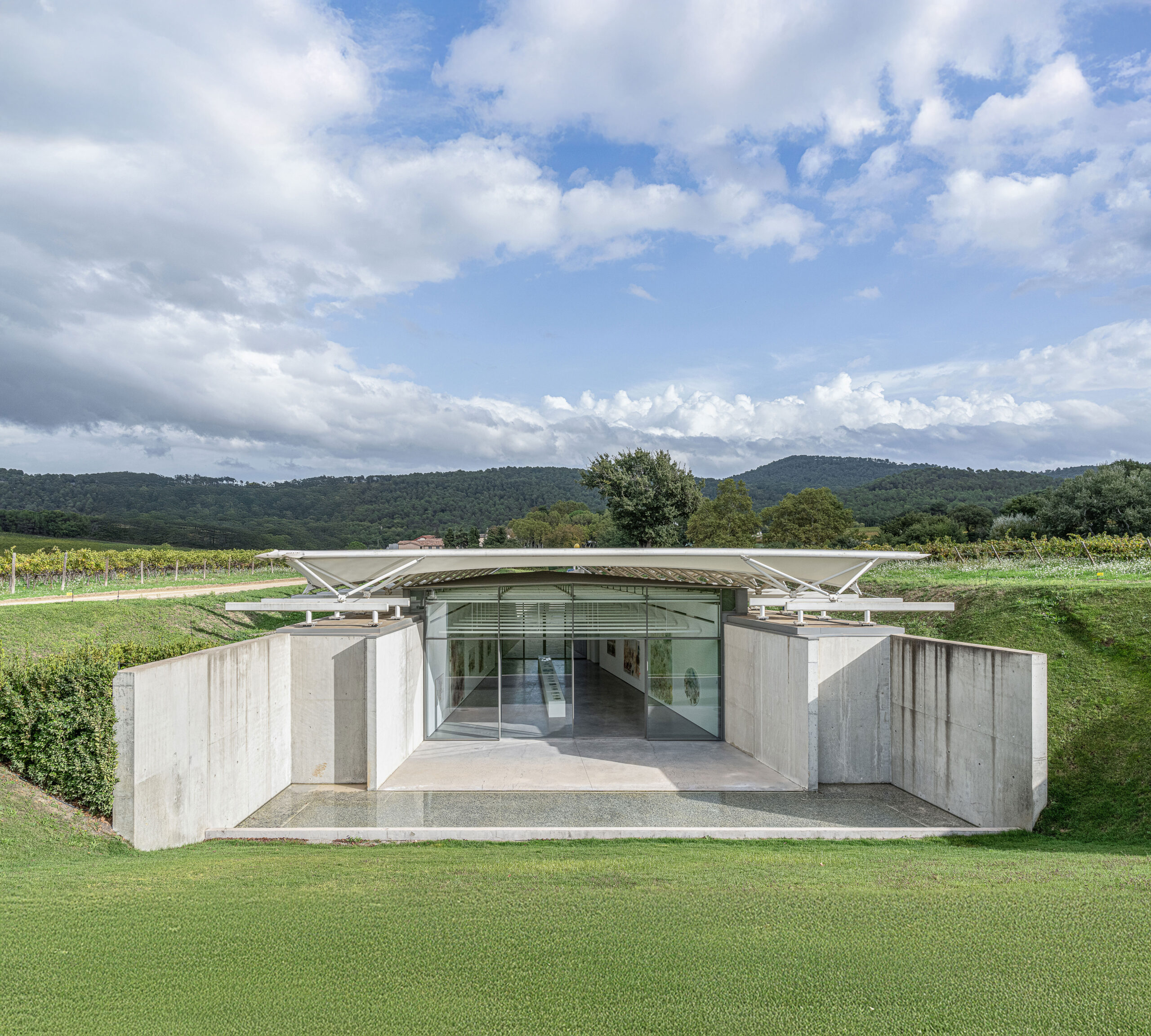
Château La Coste | © Stephanie Aboudaram | WE ARE CONTENT[S]
Kang’s journey from figurative art to poetic abstraction has been remarkable. After relocating to France, she found early success in the 1980s, with her work exhibited at Paris’s Centre Pompidou in 1986. By 1989, she became the first Korean female artist to hold a solo exhibition at Seoul’s National Museum of Modern and Contemporary Art. Her relationship with Dominique de Villepin began in the late 1990s when Villepin, then Secretary General under President Jacques Chirac, encountered her work at an exhibition of Franco-Chinese master Zao Wou-Ki. Captivated by her artistry, Villepin not only became a key collector of her works but also a close friend and eloquent chronicler of her art, using poetic language to delve into its core. To Kang, Villepin is not just a politician but a poet.

Myonghi Kang at Château La Coste, 2024 – Provence – France | © Stephanie Aboudaram | WE ARE CONTENT[S]
The artistic atmosphere of the Villepin household has also profoundly influenced Dominique’s son, Arthur de Villepin, founder of Villepin Gallery. When Arthur moved to Hong Kong in 2010, he chose to bring three African masks and a small painting by Kang. The painting—with gold specks that reflect sunlight differently over time—perfectly encapsulates Kang’s creative philosophy. Arthur recalls how her works, born of global travels and cultural integration, continually inspire reflections on art and life. Kang’s intense dedication and emotional depth have pushed Arthur to see the world through fresh perspectives. Over time, his understanding of her art has deepened, mirroring his personal growth and expanding worldview.
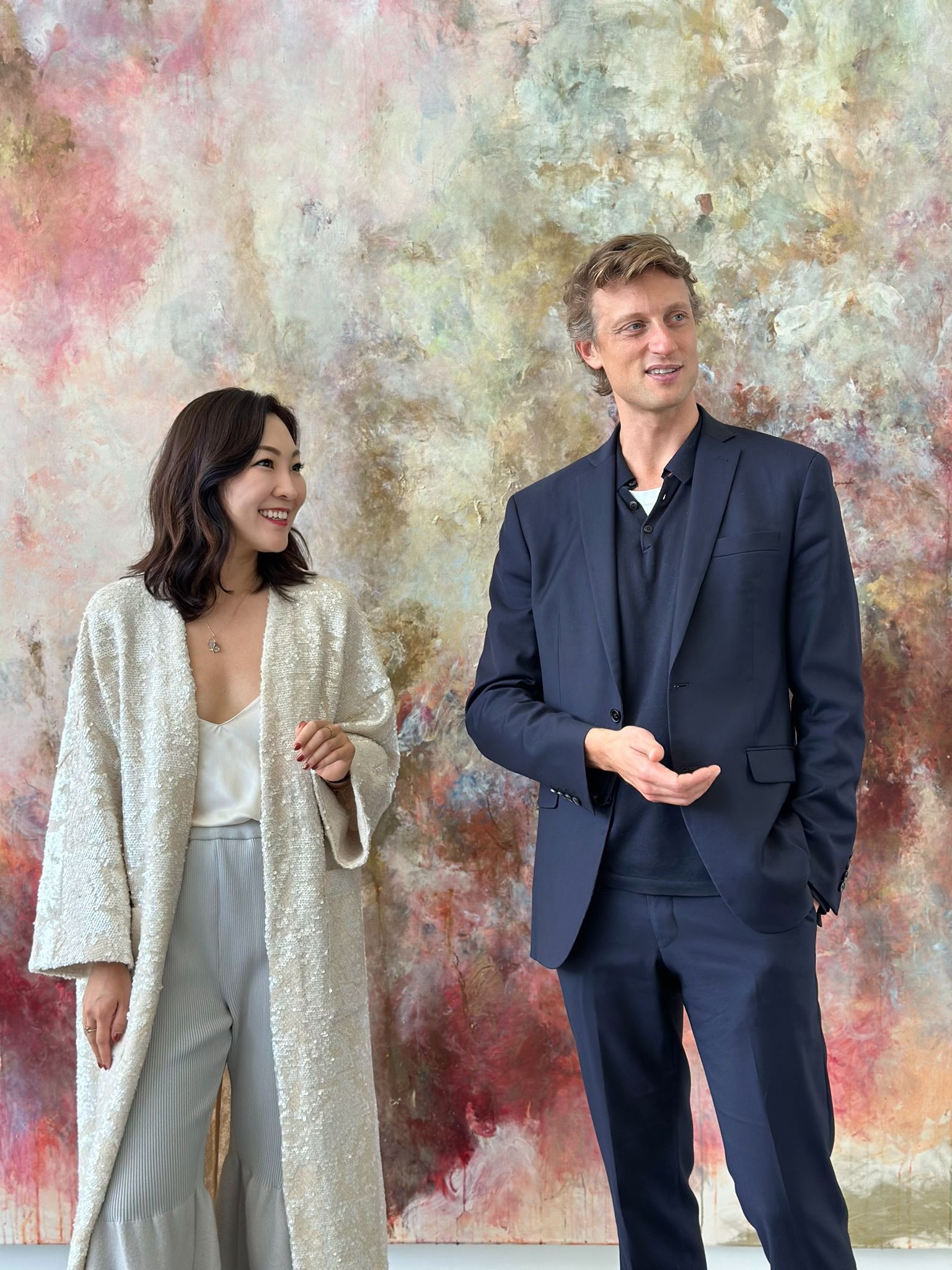
Kang’s art is rooted in the natural world. Her landscapes are vast and pure, embodying both abundance and emptiness. Layers of vibrant brushstrokes form textured canvases where colours, forms, and traces flow with a natural rhythm. Her interplay of light and translucency is not a replication of nature but a profound meditation on time and an exploration of universal truths that transcend it.

Myonghi Kang at Château La Coste, 2024 – Provence – France | © Stephanie Aboudaram | WE ARE CONTENT[S]
Time is fluid, but painting grants it a tangible form, condensing fleeting memories into enduring landscapes. Arthur de Villepin, curator of this exhibition, explains that Kang’s work possesses a “transcendental” quality that stems from her ability to weave time, perspective, and emotion into each piece. For instance, Kang’s painting Cherry Tree took eight years to complete, embodying her philosophy of coexisting with and observing a single subject across time. Each work becomes a tapestry of multiple perspectives, moments, and emotions, offering viewers a visual memory layered with meaning.
The exhibition’s title, Requiem, draws from one of Kang’s works. While traditionally associated with a mass for the dead, Kang’s Requiem symbolises the healing power of nature and humanity’s place within it. Healing, for Kang, is neither linear nor immediate; it is a cyclical process of adjustment, reflection, and renewal—ultimately finding harmony between oneself and the natural world.
In her Jeju series, inspired by Korea’s Jeju Island, Kang uses layered colours and brush marks to blend her signature into the composition, making it a part of the scene rather than an external addition. This reflects her belief that she is intrinsically part of nature. By refusing to separate herself from the landscapes she paints, Kang dissolves the boundary between artist and subject.
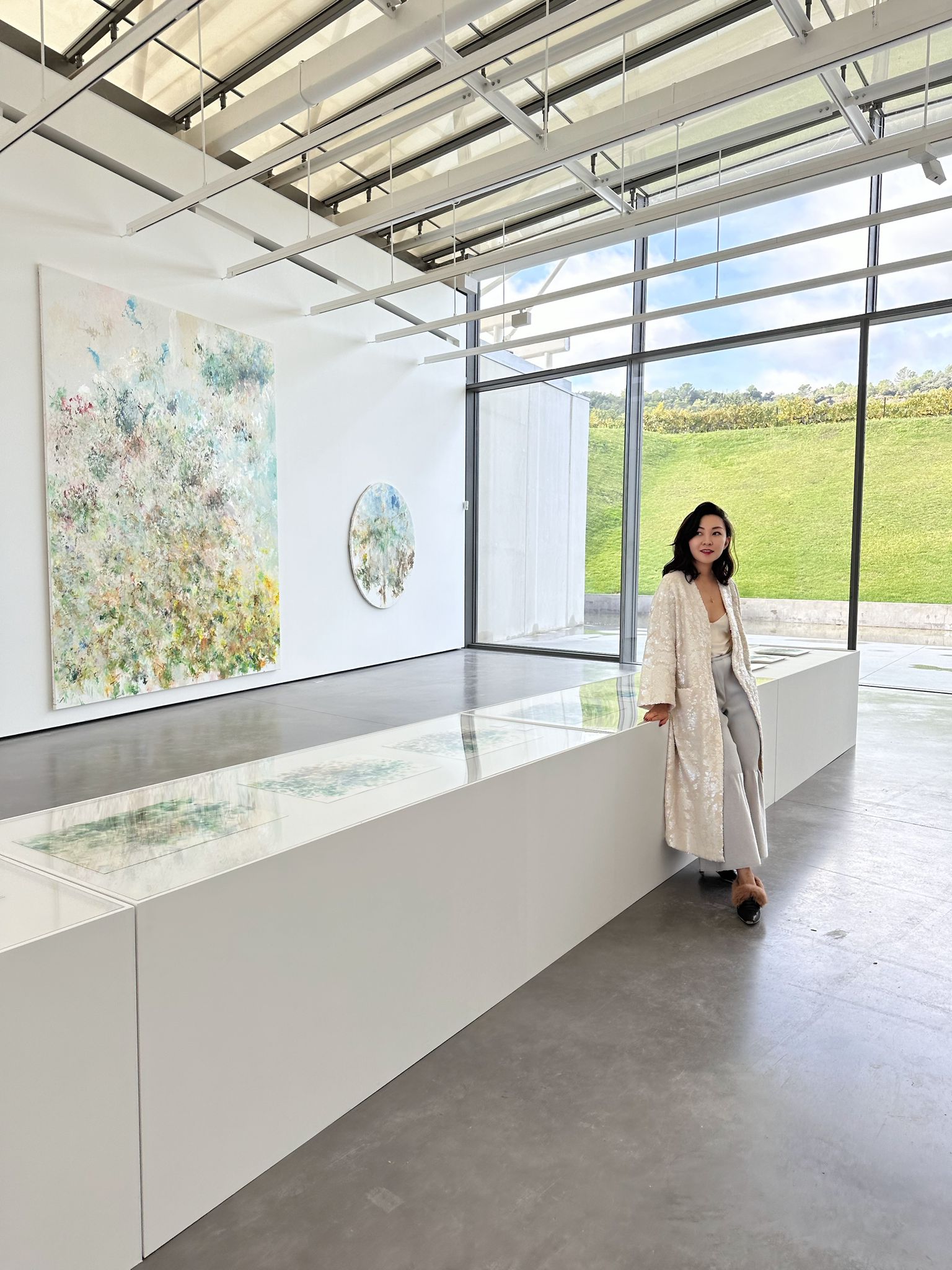
Arthur de Villepin observes how Kang’s global travels—from Korea to France, the Gobi Desert, and the Patagonian Plateau—inform her art, infusing it with the philosophical insights of both Eastern and Western traditions. Her use of negative space and delicate pencil markings speaks to Eastern ideals of balance and dialogue with nature, contrasting with Western narratives often centred on human dominance. Arthur notes that in Eastern traditions, many great painters were also monks, their art born of introspection and communion with the world around them.
In Kang’s work, pencil lines may fade, colours might erode, and imperfections emerge—a poignant reflection of life’s transient and imperfect nature. Arthur de Villepin remarks, “Life is ever-changing, and its beauty lies precisely in its imperfections.” This philosophy imbues Kang’s art with universal truth, transcending cultural and geographic boundaries. Her paintings evoke emotions and insights that extend beyond the frame, inviting viewers to contemplate life’s inherent impermanence and interconnectedness.
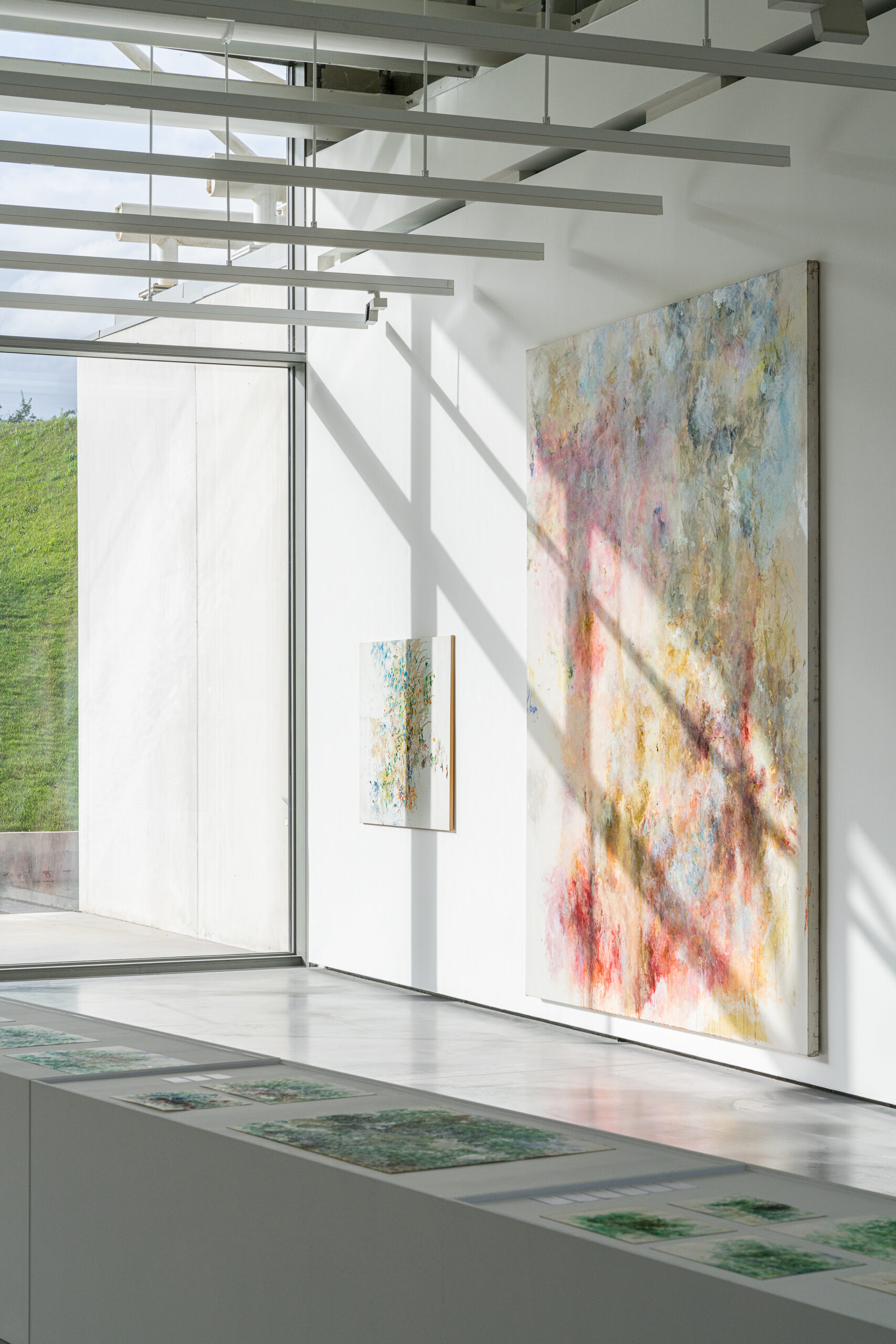
Myonghi Kang at Château La Coste, 2024 – Provence – France | © Stephanie Aboudaram | WE ARE CONTENT[S]
In a world where art is often commodified and valued by price tags, Kang’s work reminds us of art’s true essence: emotional resonance and universal connection. True collectors, like the Villepin family, treasure art for its ability to inspire compassion, expand perspectives, and reveal the profound beauty of both the minute and the grand. This emotional depth, rooted in the artist’s personal sensibility, enables Kang’s work to transcend time and space, embodying enduring universal values.
Myonghi Kang’s art is not confined to the tangible. It is a dialogue—between artist and nature, viewer and canvas, moment and eternity—unveiling the infinite layers of existence. Through her work, she offers a meditation on the human experience, an enduring testament to the universal truths that bind us all.

Myonghi Kang at Château La Coste, 2024 – Provence – France | © Stephanie Aboudaram | WE ARE CONTENT[S]
“There is no perfection in the world, just as life is full of its own cycles of joy and sorrow, completeness and imperfection. The profound truths of life conveyed by a painting and the new understanding it inspires in the viewer lie in the universality of personal expression,” remarked Arthur de Villepin. Dominique added, “What Myonghi Kang has been searching for through her art is the truth of nature—the harmony between humanity and the natural world. Her work Requiem speaks of the cost of life: the sorrows brought by each failure, by everything we lose along the way. Yet, it reminds us that we must continue living, ensure that life holds meaning, and find ways to make it better. Art offers this revelation. It allows us to believe that life can be full of beauty and that everyone can create a better existence for themselves and those around them.”

Myonghi Kang at Château La Coste, 2024 – Provence – France | © Stephanie Aboudaram | WE ARE CONTENT[S]
Artists express the essence of life through their brushstrokes, while viewers find new perspectives on life within the works they observe. Painting is both a deeply personal form of expression and a profound interpretation of existence. This is why art remains essential in any era, and why the artist’s fidelity to their own voice is so crucial.
Recently, I came across a passage in the memoir of Chinese actress Joan Chen, where she reflected on the advice of Italian director Bernardo Bertolucci: “The more we are faithful to our personal expression, the more universal our work becomes.” Listening to Dominique and Arthur de Villepin share their reflections on the transcendence of time, space, geography, and culture in Myonghi Kang’s art, I could not help but think about what gives a painting its true value. It is not just the fragile, abundant, or flourishing beauty that the artist captures with colour and brushwork within the frame, but the emotions and insights that extend beyond the canvas—new revelations about life and the world that push the viewer’s understanding beyond its prior limits.
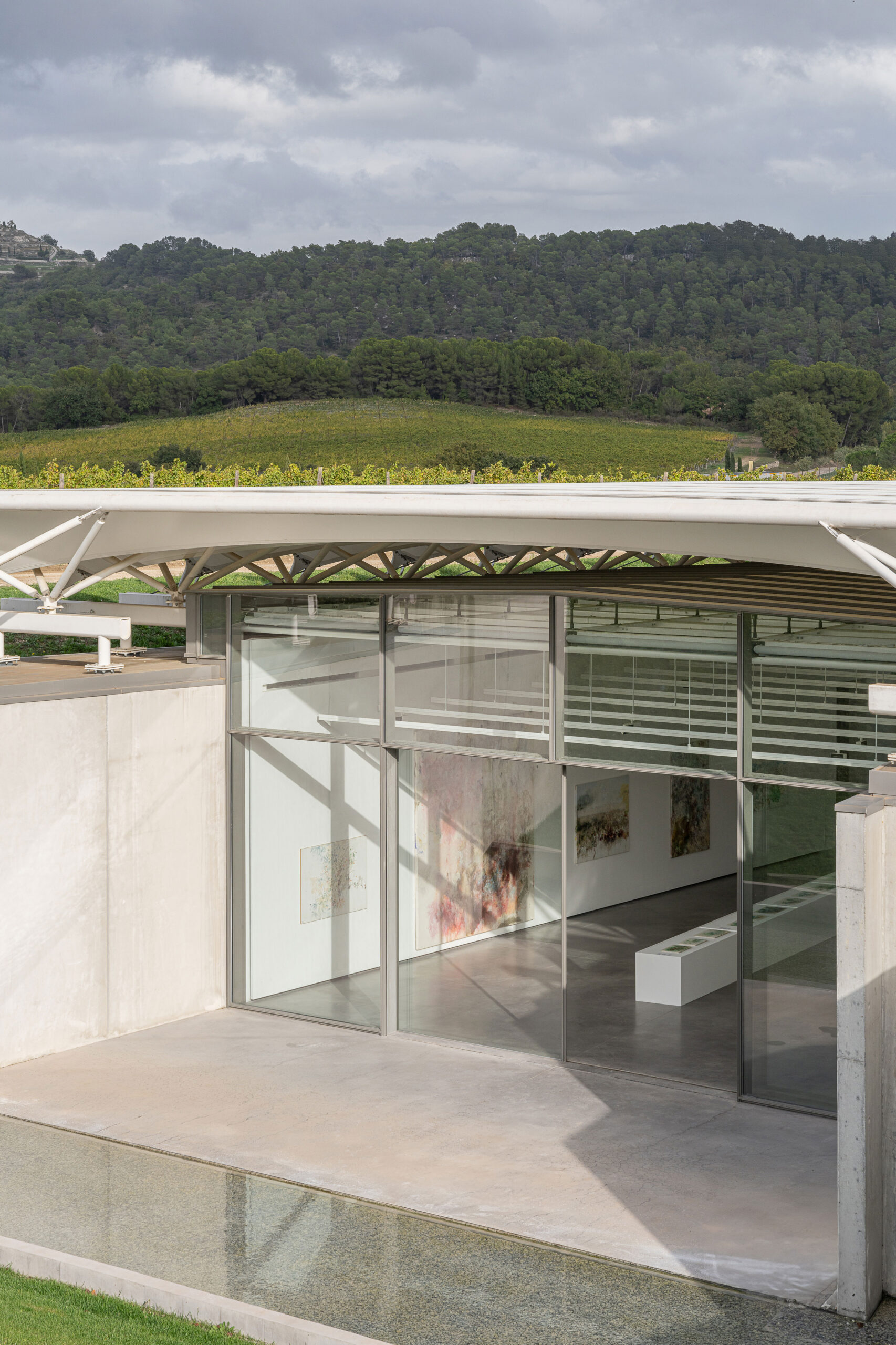
Myonghi Kang at Château La Coste, 2024 – Provence – France | © Stephanie Aboudaram | WE ARE CONTENT[S]
In a time when speculators define the value of art through market trends and price tags, true collectors who grasp the essence of art treasure the “emotional resonance” within a work. It is this connection to the artist’s personal sensibility that fosters a deeper compassion in collectors and viewers alike. This understanding broadens their worldview, allowing them to both appreciate the “small” and comprehend the “great.” This is precisely the energy that enables a piece of art to transcend time and place, carrying forward enduring “universal values.”
-the end-
Text: Luning
Copyediting: Rosie


